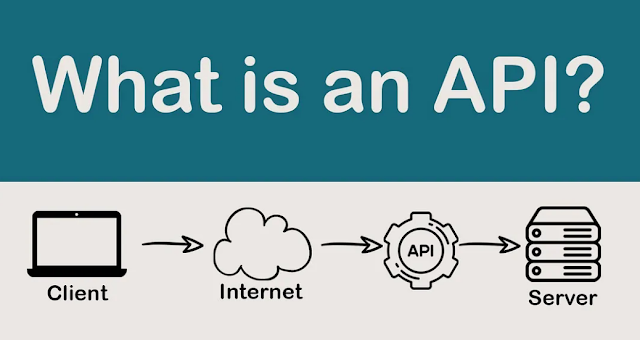Unveiling the API: A Bridge Between Applications
 |
| https://www.jitterbit.com |
Think of the time when you are planning a journey. You must look at available flights, reserve your accommodation, and browse local tourist attractions. Rather than visiting various websites for these tasks, wouldn’t it be more convenient if there was one central portal that merged all these capabilities?
- That is precisely what an API accomplishes.
- It allows different applications to communicate and exchange data in an organized manner.
- In a restaurant, think of a waiter as the API. In this case, the waiter (The API) will serve as your link (Messenger) to communicate with the kitchen staff back there (Other application).
As an example, you would need to tell the waiter that you need something like food or anything else related to that through which he/she can take your message back there (The Kitchen) and bring it (Your order).
Decoding API Functionalities: How Applications Talk
 |
| https://www.mailmodo.com |
Requests:
What information can be requested from the software?
Responses:
How does the application deal with requests and what kind of data structure is employed.
Authentication:
How do applications know each other and how can they securely communicate.
Examples of widely-used protocols include REST (Representational State Transfer) that works with resources via standard HTTP verbs like GET, POST, PUT, DELETE.
Unveiling the Benefits of APIs: Powering Innovation
 |
| https://apitoolkit.io |
Fast Development:
APIs offer already built functions relieving a developer of the need to reinvent the wheel. They can simply incorporate functionality like maps, payments or social media logins into their applications without writing complex code from scratch.
Higher Efficiency:
Developers are able to concentrate on their application core functionalities as APIs streamline development process.
More Reach:
API enables developers to expose their application’s data and its functionalities to the wider audience thus facilitating innovation and collaboration.
Users:
APIs make apps more exciting by allowing diverse features and services.
This makes it possible for applications to integrate different aspects of life, thereby creating an ease in user experience.
This provides a great deal of choice for users who benefit from many applications employing different APIs with distinct capabilities. APIs allow applications to work together by making them automate tasks thus saving user time.
Exploring Real-World API Applications: Examples in Action
 |
| https://www.turing.com |
Weather Applications:
APIs allow for easy use of weather services to see the current weather. Social Media Sharing: Use social media APIs to cross-post on various platforms.
Travel Booking Apps:
There are APIs that can connect you with travel providers, where you can search and book flights, hotels, and activities.
Payment Gateways:
Payment gateway APIs enable applications to include secure payment processing features.
Ride-Sharing Apps:
Through mapping and location services that interact with API’s it is possible to call drivers who can manage rides.
These are only a few examples, as technology advances; the list of possible applications for APIs is continuously expanding.
Diving Deeper: Exploring Different Types of APIs
 |
| https://medium.com/@krunalchauhan_ |
Public APIs:
openly available to anyone with often limited usage terms and conditions.
Private APIs:
designed for use within the company or offered to a few partners.
Partner APIs:
companies offer these in order to allow third party developers to integrate their functions into their applications.
REST APIs:
make use of HTTP verbs in data exchange and are based on resources
SOAP APIs:
most common in enterprise environment, they employ XML messaging for communication.
The choice of the API depends on the exact requirements as well as the context within which the application is being developed.
Getting Started with APIs: Resources for Developers
 |
| https://idratherbewriting.com |
API Documentation:
Most API providers offer detailed documentations on how to use their APIs including request formats, response structures and authentication mechanisms.
Online Courses and Tutorials:
Numerous online platforms provide classes and tutorials that will guide you in using various programming languages as well as frameworks with APIs.
API Communities and Forums:
Participate in digital communities and forums where developers interact and learn new things from one another while seeking clarification through questions on variety of topics related to development.
Leverage these resources and play around with different APIs to unlock the potential of powerful tools that can help you create innovative applications shaping tomorrow.
Conclusion: APIs - The Invisible Symphony of the Digital World
Behind the scenes, APIs do not hide but their relative importance in our digital lives is not insignificant. They are like invisible bandleaders who make the seamless transfer of data and functionality within apps possible and which power our daily services. From your phone’s effortless weather updates to the interconnectivity of social media platforms, APIs create a digital quilt that simplifies our daily routines and enables us to have novel experiences.With advancing technology, we can expect that in the future these APIs will continue to be non-negotiable when it comes to human interactions with cyberspace.
Therefore, when next time you easily schedule a flight or share a post on more than one platform or get real-time weather information, remember one thing –API—this silent conductor behind the stage harmonizing all activities that happen digitally.
Tags
API

